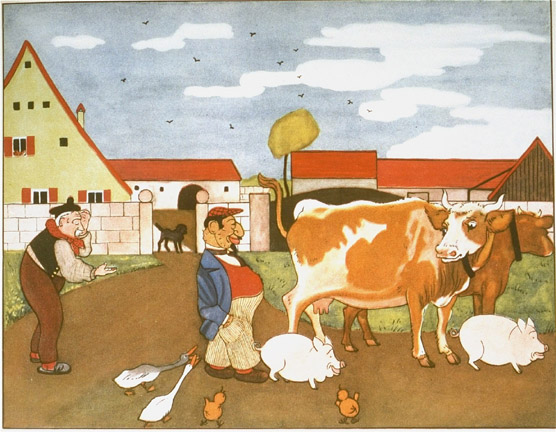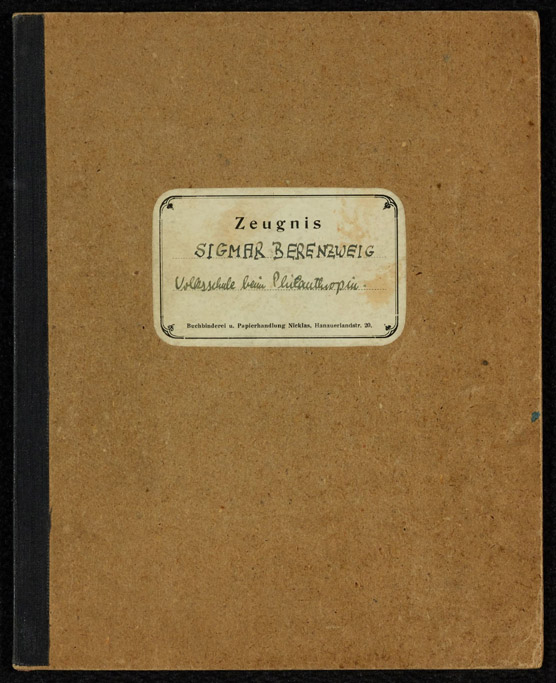Daily school life
How quickly things changed for Jewish pupils under Nazi rule depended largely on the teacher.
Individual choices
Many discriminatory actions against Jewish pupils were not dictated by law. They represented individual choices made by the teacher. Some teachers assigned Jewish children separate benches; others gave them lower grades. Equally Jewish children were progressively excluded from swimming lessons, school trips and parties.
The more everyday school life conformed to Nazi rituals, such as the Hitler Salute and the raising of the flag, the more Jewish pupils were excluded from the ‘community’.
Steven Mendelsson, born in Breslau in 1926, entered school around 1932/33. Significantly, this year marked the collapse of the Weimar Republic and Hitler’s rise to power. He remembers, initially at least, a strict but fair teacher in class. His teacher chose not to spread an atmosphere of antisemitic terror and fear.
© National Holocaust Centre and Museum
Official decree
In April 1933 the decree against the ‘Overcrowding of German Schools’ limited the intake of Jewish students to grammar schools to 1.5 %. The share of Jewish students lay well above this number reflecting importance of education to the German Jewish community.
But the most effective measure to exclude Jewish children from school was the denial of school subsidies in October 1933.
Racial sciences
Racial Sciences became an obligatory subject across the Reich in 1935. But again how these classes were delivered very much depended on the teacher in the classroom. Some teachers chose to use Jewish children like an exhibit; others allowed them to leave or avoided any direct confrontation.

This is an image from the propaganda booklet Trust no Fox. These booklets were supplementary to the existing textbooks. The illustration depicts the antisemitic view of a greedy Jewish cattle dealer ruining an honest German farmer by putting him in debt. The false stereotype of the dishonest Jewish character was central to Racial Sciences.
© National Holocaust Centre and Museum
How a Jewish pupil might respond to all of this would be largely dependent on their character and disposition.
How does Ruth David describe her experience at school? How does her teacher behave? What contributed to her ordeal? How did the situation make Ruth feel?
© National Holocaust Centre and Museum
Fight to stay in education
Initially many courageously strove to complete their education, despite the discrimination, the cuts in school subsidies and the entry restrictions to secondary schools and universities.
Bernard Grunberg’s father was a successful cattle dealer offering his family a respectable middle-class life style. What would his aspirations have been for his son’s education and future? Unlike in the cities, in the countryside fewer Jewish children went on to higher education. How does this affect Bernhard’s position in class? How does his teacher act in class?
© National Holocaust Centre and Museum
Exodus from public schools
But around 1936 the great exodus of Jewish children from public schools began. Jewish schools provided an “island of peace” and a positive experience of Judaism under growing antisemitic persecution. The curriculum of the increasing number of Jewish schools after 1933 reflected the new Jewish self-awareness. Exclusion from the German “people’s community” lead to a greater emphasis on a “national” Jewish education.

“For enlightenment and Humanity” was the ethos of the liberal Jewish reform school Philantropin in Frankfurt founded in 1804 under the protection of the Rothschild family. The “Zeugnis” is Sigmar Berenzweig’s final school report before leaving for Britain on the Kindertransport. How did his parents try to shape Sigmar’s identity by choosing this school?
© National Holocaust Centre and Museum